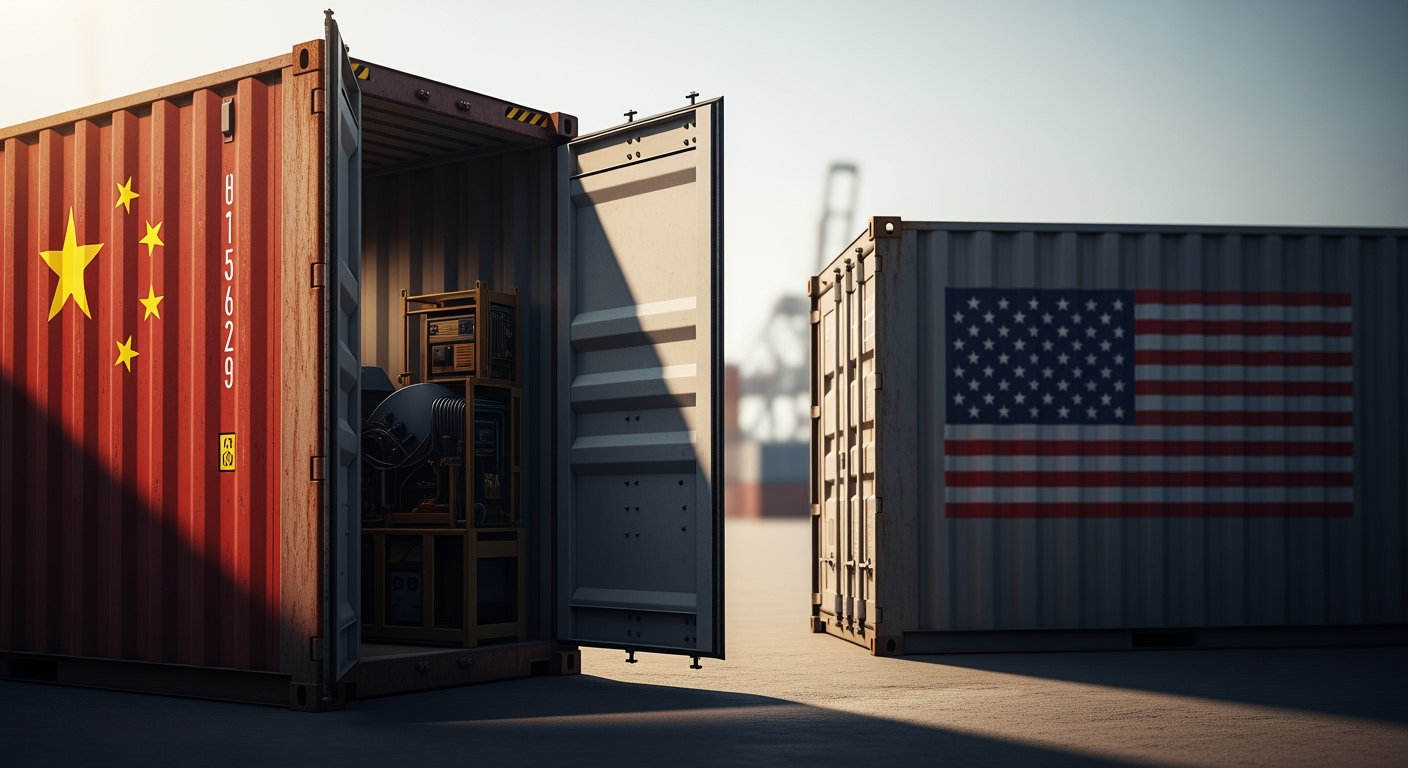Related Articles

Mexico Reels from Catastrophic Floods and Landslides, Death Toll Climbs to 37

Diane Keaton, Oscar-Winning Star and Unforgettable Icon, Dies at 79





Washington and Beijing locked in a deepening economic standoff as fresh US tariffs trigger sharp Chinese condemnation, reviving accusations of hypocrisy and threatening global trade stability.
The already strained economic relationship between the United States and China has entered a new phase of intense contention following Washington's latest imposition of sweeping tariffs on Chinese imports. Beijing has swiftly and vociferously condemned these actions, accusing the US of "double standards" and "economic bullying," assertions that underscore the escalating trade hostilities between the world's two largest economies. The recent moves by the US are poised to significantly reshape global supply chains, impact consumer prices, and further entrench a rivalry extending beyond mere economic competition.
On October 10, 2025, President Donald Trump announced an additional 100% tariff on all Chinese imports, an aggressive measure slated to take effect on November 1, 2025. This dramatic increase will push the total tariff rate on Chinese goods to approximately 130%, marking a significant intensification of trade tensions. The White House stated this decision was a direct response to China's October 9 imposition of stricter controls on rare earth exports, critical minerals vital for US defense, electric vehicle, and clean energy industries. This latest escalation follows a series of earlier tariff increases implemented throughout 2025, including a 34% tariff in April and previous 10% tariffs in February and March, which the administration linked to concerns such as Beijing's role in the fentanyl crisis.
These recent actions build upon tariffs enacted by the Biden administration in September 2024, which specifically targeted key Chinese strategic industries. Those measures included a 100% tariff on electric vehicles, a 25% tariff on lithium-ion EV batteries, and a 50% tariff on photovoltaic solar cells. Tariffs were also raised on semiconductors, steel, aluminum, and certain medical products. The comprehensive nature of these tariffs indicates a concerted effort by the US to curb China's growing dominance in advanced manufacturing and green technologies.
China's response to the new tariffs has been one of immediate and forceful condemnation. The Ministry of Commerce described the US actions as "typical unilateralism and protectionism," asserting they not only seriously undermine the international trade order but also jeopardize the security and stability of global industrial and supply chains. Beijing has vowed to take "corresponding measures" to safeguard its own rights and interests.
A central pillar of China's counter-argument is the accusation of "double standards." At a World Trade Organization (WTO) meeting in October 2025, China's delegation criticized the US for what it termed "reciprocal tariffs" and "unilateral measures." Chinese officials highlighted that while the US frequently complains about its trade deficit in goods, it intentionally overlooks its substantial surplus in services trade, a practice Beijing deems a "typical double standard." Ministry of Foreign Affairs spokesperson Lin Jian stated that putting "America First" over international rules harms global production stability and severely impacts the world's economic recovery. Beijing maintains that the US tariff increases will ultimately raise prices for American consumers and businesses, failing to address the US's own trade deficit or enhance its industrial competitiveness.
The United States has consistently framed its tariff actions as a necessary response to what it perceives as unfair and market-distorting trade practices by China. Key concerns frequently cited include intellectual property theft, forced technology transfers, and extensive state subsidies that provide Chinese companies an unfair advantage. The Biden administration's 2024 tariffs were explicitly aimed at supporting domestic manufacturing and reducing reliance on Chinese imports in strategic sectors.
Furthermore, the concept of "overcapacity" in Chinese new-energy industries, such as electric vehicles and solar panels, has been a significant point of contention. US officials argue this alleged overcapacity poses risks to American industries and jobs. This perspective suggests that Chinese government support leads to an excess supply of goods, which are then offloaded onto global markets at artificially low prices, harming industries in other countries. The continuity of protectionist policies across different US administrations, with both major political parties largely supporting tariffs against China, indicates a bipartisan consensus in Washington to prioritize domestic industries and national security in economic policy.
The escalating trade war carries substantial economic implications for both the US and China, as well as the broader global economy. Experts predict that the new tariffs will lead to rising prices for electric vehicles, wind turbines, and semiconductor components in the US. The Global Trade Research Initiative (GTRI) anticipates that the increased tariffs could push up prices for various goods and create challenges for the US in managing inflation and production costs.
The trade conflict also exacerbates global supply chain disruptions. Companies that have built complex supply networks across the globe are facing increased uncertainty and costs, prompting many to re-evaluate their sourcing strategies. Economists have warned that policy uncertainty, a direct consequence of ongoing trade tensions, can deter investment and slow global economic activity. Research by the Federal Reserve Bank suggested that increased policy uncertainty associated with US-China trade tensions could potentially reduce global GDP growth by one percentage point.
While the direct impact on the US economy could include higher consumer prices and reduced export competitiveness, China is also expected to face significant, though potentially less severe, consequences. For other nations, the trade war presents a mixed bag of challenges and opportunities. Countries like India, for example, may see a chance to increase their exports to the US as American buyers seek alternatives to Chinese goods. However, major trading partners like Mexico and Canada, along with Asian economies such as South Korea, Japan, and Singapore, are vulnerable to ripple effects due to their strong trade ties with both economic giants.
The recent escalation in tariffs and China's strong rebuttal highlight the entrenched nature of the US-China trade conflict. Beijing's accusation of "double standards" encapsulates its view that US trade policies are driven by protectionism and geopolitical aims rather than solely fair trade principles. Washington, in turn, maintains that its actions are necessary to counter what it sees as unfair Chinese practices and to safeguard its own economic and national security interests.
This cycle of accusation and retaliation signals a deepening economic decoupling between the two powers. The ramifications extend beyond bilateral trade, creating significant uncertainties for global supply chains, investment patterns, and the international trading system. As both nations continue to prioritize their domestic interests and strategic advantages, the world economy braces for sustained turbulence in the absence of a clear path toward de-escalation.